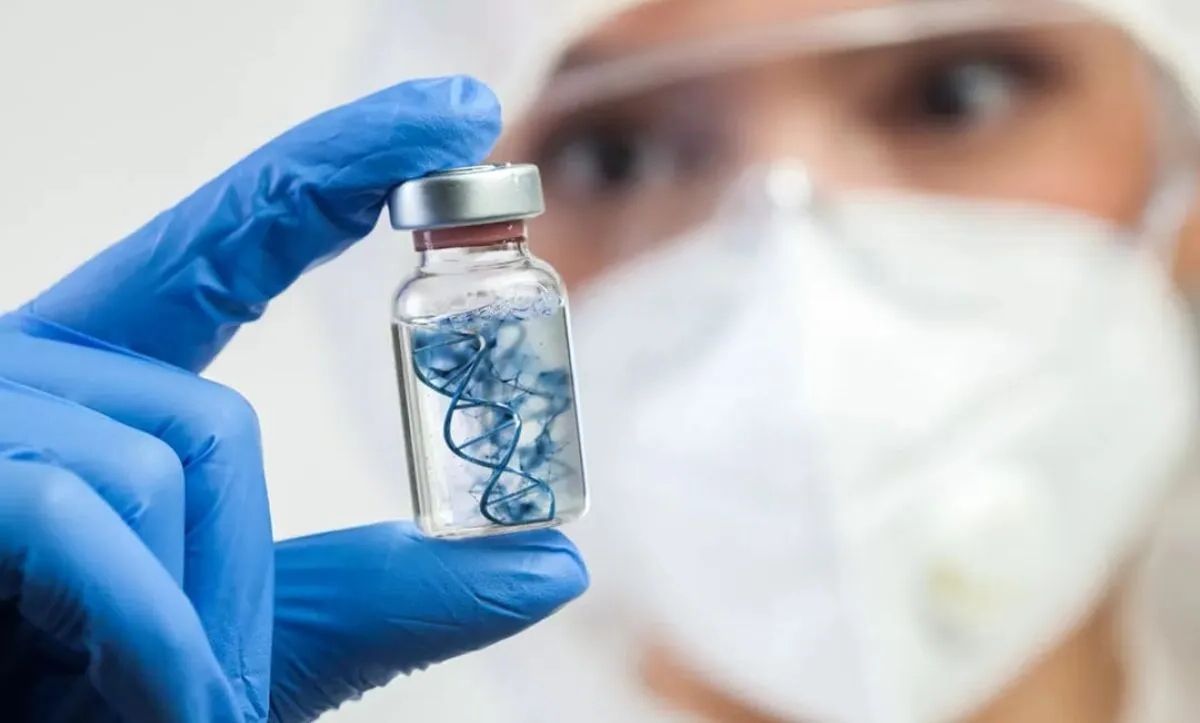Health
mRNA Vaccines Have a New Human DNA Problem
More bad news for the vaccinated.

This article originally appeared on The Epoch Times and was republished with permission.
Guest post by Marina Zhang
Following his discovery of DNA contamination in COVID-19 mRNA vaccines, genomic researcher Kevin McKernan has recently found that the DNA in these vaccines can potentially integrate into human DNA.
The COVID-19 vaccine spike sequence was detected in two types of chromosomes in cancer cell lines following exposure to the COVID-19 mRNA vaccine. Mr. McKernan’s findings, which he presents on his Substack blog, haven’t been peer-reviewed.
These are expected to be “rare events,” but they can happen, Mr. McKernan told The Epoch Times.
DNA Integration
Since the introduction of the COVID-19 mRNA vaccines, some members of the public have been concerned that the vaccines may modify human DNA by combining their sequences with the human genome.
“Fact-checkers” refuted this, saying mRNA cannot be changed into DNA. Yet Mr. McKernan’s earlier work shows that DNA in the vaccine vials may be capable of changing human DNA.
Ulrike Kämmerer, a professor of human biology at the University Hospital of Würzburg in Germany, conducted earlier stages of this research.
Exposing breast and ovarian human cancer cells to Pfizer and Moderna mRNA vaccines, Ms. Kämmerer found that about half of the cells expressed the COVID-19 spike protein on their cellular surface, indicating that they had absorbed the vaccines.
Mr. McKernan then performed gene sequencing and found that these cells and their descendant cells contained vaccine DNA.
After this, he tested to see whether any vaccine DNA combined with the cancer cell DNA, a process known as DNA integration. Integration is more of a concern in healthy cells than cancer cells because it disrupts cells’ genetic stability and integrity, increasing cancer risk.
However, because cancer cells already have unstable DNA, the effects of DNA integration are less clear.
Currently, in biomedical research, most experiments are carried out in cancer cell lines, as they are easier to obtain, experiment on, and maintain in the laboratory.
Mr. McKernan detected vaccine DNA sequences on two chromosomes in the cancer cell lines: chromosome 9 and chromosome 12. The sequencing machine detected both instances of integration twice. It is important to get two readings of the DNA integration to ensure that the integration is not a result of misreading or random error, he said.
“The integration of ‘vaccine’ genetic information into the genome of cells was not such a surprise for me—more the confirmation of what we had to expect, unfortunately,” he told The Epoch Times.
Mr. McKernan said it is unsurprising that integration was detected on only two chromosomes with two readings of each integration. This is because integration is rare, and the genes must be sequenced many times to get more sensitive results.
The current findings are still preliminary, he said. More tests are also needed to determine whether DNA integration could be passed on to descendant cancer cells and whether this may affect cancer patients.
Also, since the test was conducted in cancer cells and not in healthy human cells, it does not suggest the same integration would occur in healthy human cells.
However, Hiroshi Arakawa, a researcher at the Institute of Molecular Oncology who has a doctorate in molecular biology and immunology, wrote in his blog that “what happens in cultured cells can also occur in normal cells” after examining Mr. McKernan’s data.
His review of Mr. McKernan’s data also found signs of DNA integration at chromosomes 9 and 12.
“A wide variety of abnormalities can occur [in normal cells] depending on the site of genome integration,” Mr. Arakawa said.
Not Random Events
The two integration events into chromosome 9 occurred at the same place, as did the integration events into chromosome 12.
Mr. McKernan said the odds of this occurring are one in 3 billion, highlighting that where the DNA integrates may not be random.
“There’s likely hotspots for this,” he told The Epoch Times, highlighting that in the human genome, jumping genes—short segments of DNA sequences—tend to “jump” into highly activated areas of DNA.
Vaccine DNA Is Active in the Cells
Mr. McKernan said he believes that vaccine DNA is highly active in cancer cells. His sequencing machine detected the DNA of cancer cells 30 times but detected spike DNA 3,000 times.
Not only did he detect much higher levels of vaccine DNA, but he also detected new variants in certain segments of the vaccine DNA.
These new DNA variations were not observed in unvaccinated cancer cells nor in the vaccine not exposed to the cancer cells.
DNA Contamination From mRNA Vaccine Manufacturing
DNA is present in the COVID-19 mRNA vaccines because of the manufacturing process.
This has been verified by the U.S. Food and Drug Administration (FDA), Health Canada, and the European Medicines Agency.
The mRNA vaccines are made from DNA; some of this DNA persists in the final product because of insufficient clearance.
-

 Health3 days ago
Health3 days agoFighting Cancer with Fenbendazole: Big Pharma’s Worst Nightmare
-

 Health2 days ago
Health2 days agoWhat Have Vaccines Done to Us? The Truth is Disturbing
-

 Health3 days ago
Health3 days agoNew WEF Report Reveals the Global Elites’ Shocking Plan to Enforce Vaccination
-

 News1 day ago
News1 day agoNikki Haley Reveals Her New Job After Dropping Out of 2024 Presidential Race in Disgrace
































